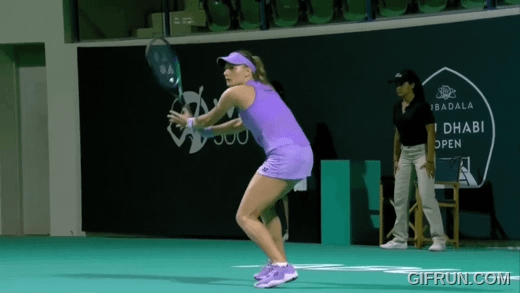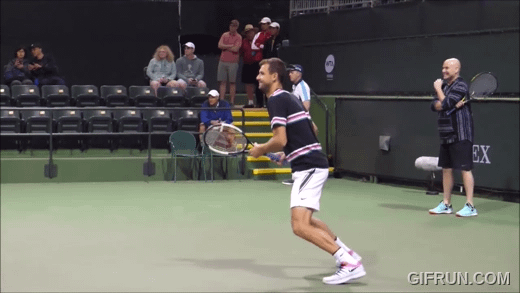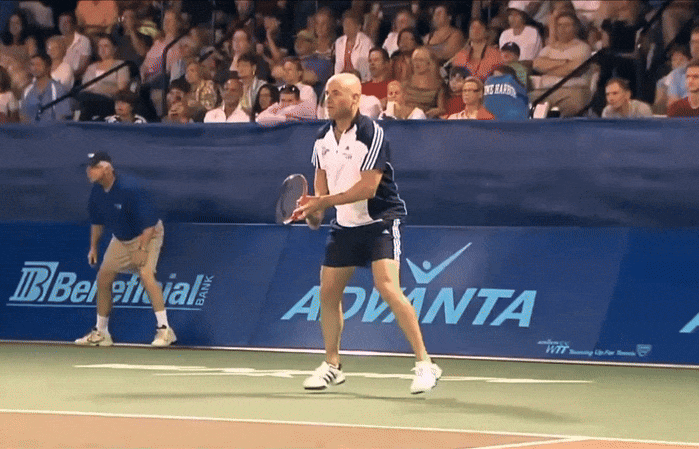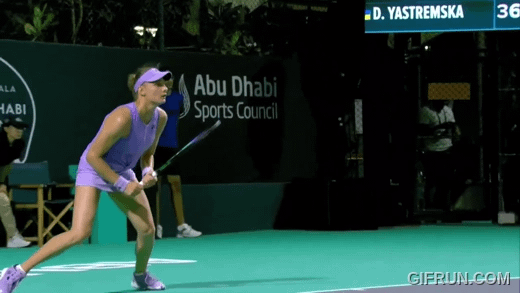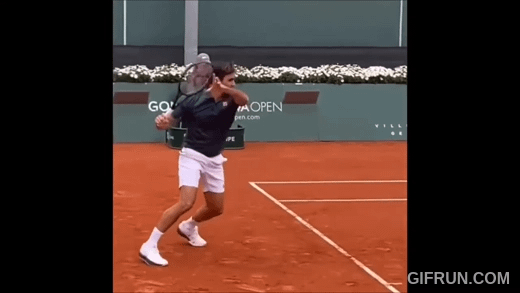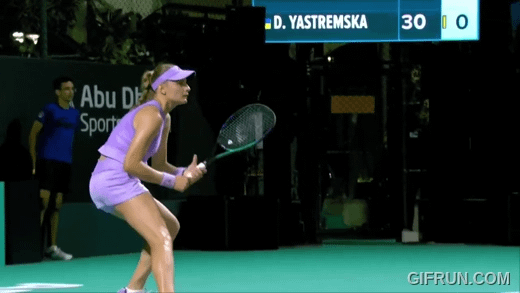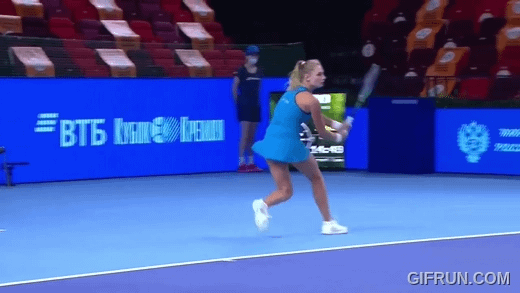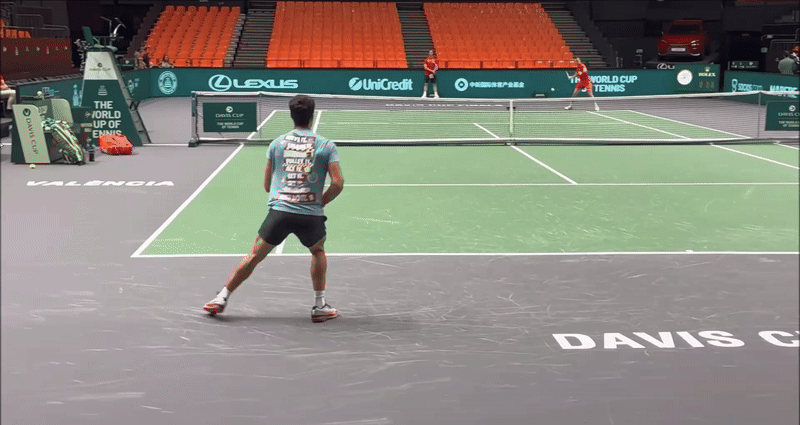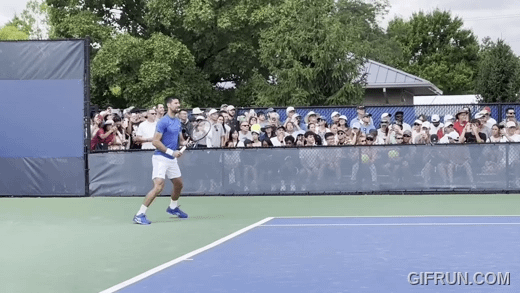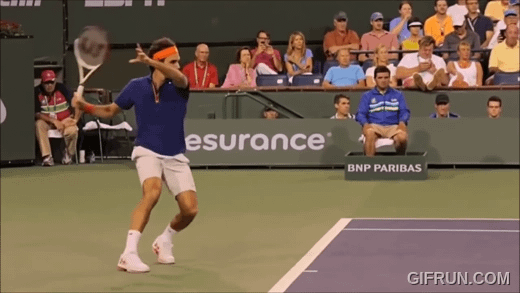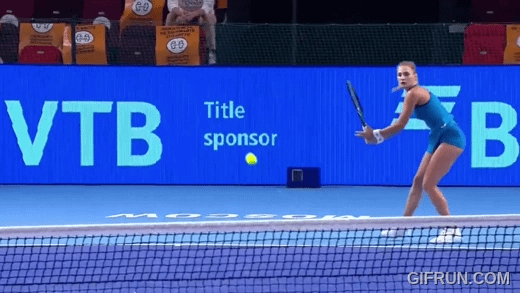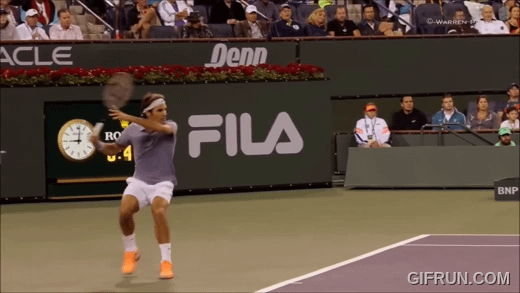What are contact moves?
Contact moves, as defined by Australian coach Dave Bailey, are a standardization of the various footwork patterns used by high-level players during the hitting portion (loading, unloading, braking) of the movement cycle, and are separate from the movement patterns that players use to travel to the ball and recover (e.g., shuffle steps, crossover steps, splitsteps, dropsteps). Contact moves are a more qualitative description of a player’s footwork during a stroke than simply referring to the stance used (i.e., semi-open, open, closed, neutral).
Why should we teach contact moves?
Teaching the contact moves gives players movement solutions to common problems on court. For example, if a player is struggling to hit out of a neutral stance on very wide balls, we could instead teach them the “running-power move;” a more effective and efficient footwork pattern for handling the shot.
It is some coaches’ opinion that we should not explicitly teach players technique/footwork such as the contact moves. However, it is my experience that players rarely generate optimal movement solutions on their own through play.
In my own work, I have seen students who formerly struggled with certain incoming shots make an immediate improvement once given the tools to deal with them (in this case, the appropriate contact move).
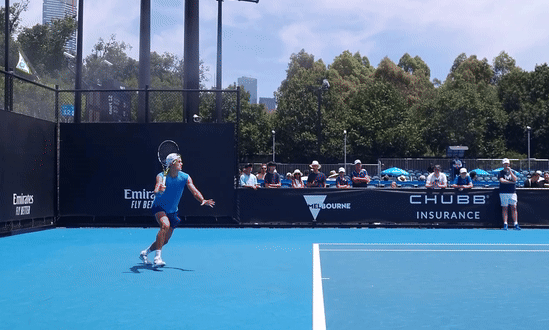
What are the contact moves?
Bailey delineates twelve of the most common footwork patterns used by professional players around contact, which he calls the “Golden 12.” These are as follows:
Step-Down Pivot (High & Low)
The step-down pivot is used on low or high balls landing near the baseline in the center of the court, and is hit with a neutral stance off the front leg. The player either kicks the back leg up (high step), or drops the back knee down (low step) depending on the contact height.
Closed Pivot
The closed pivot is used primarily on the backhand side when moving laterally a short to medium distance away. The player hits from a closed stance, stepping across their body with the front leg, then allows the back leg to swing around after hitting.
One-Foot Pivot
The one-foot pivot is hit against fast-moving balls from close to the baseline in a semi-open (when moving backward) or open stance (when moving laterally). The player loads on the outside or back leg, then pivots as they swing, lifting their non-hitting side knee as they do so.
The player may use this contact move when moving laterally or backward. Generally, the contact point for this shot is around chest to shoulder height.
Two-Foot Pivot
The two-foot pivot is used against low, fast-moving balls while staying close to the baseline. The player drops into a wide open stance, then shifts their hips to hit, staying low and keeping the knees bent. This is an extremely common contact move in women’s professional tennis, due to the flatter and lower-bouncing trajectory of shots as compared to the men’s game.
Low Spin
The low spin is used against low balls when moving a short distance laterally, and while close to the baseline. The player loads on the outside leg in a semi-open stance, spinning the hips, and staying low as they swing.
Mogul Move
The mogul move is used when the player must move quickly laterally, but not so quickly that they are hitting on the full run (see below). The player loads on their outside leg in an open stance, then shifts across as they swing, with both feet coming off the ground. The player stays low and generally lands on both feet. The player should land further to the hitting side than where they made contact.
Power Move
The power move is used when hitting on the full run. The player loads in an open stance on their back leg, swinging as they “run” through the ball, and landing on their front leg.
Front-Foot Hop
The front-foot hop is used to attack short balls landing in the upper parts of the court. The player loads on their front foot in a neutral stance, hopping from the front foot to the front foot shortly after contact as they transfer their weight from back to front through the shot. The back leg kicks up to aid in balancing the player.
Lateral Hop
The lateral hop is used when moving laterally along the baseline. The player loads on their outside leg, extending and turning their hips as they hit. The player kicks the inside knee up for balance as they swing.
Transfer
The transfer is an offensive contact move used to attack floating balls near the baseline, or when the player is hitting inside forehands (a forehand hit from the backhand side). The player loads in a semi-open stance, elevating off the court as they extend their back leg, and landing on their non-hitting-side leg. Transfers may be forward, in which case the player moves forward during the swing, or lateral, where the player moves toward the non-hitting side.
Back-Foot Hop
The back-foot hop is essentially a lateral hop performed while moving diagonally backward.
Reverse Spin
The reverse spin is used against deep and high-bouncing balls while moving backward. The player loads on the back leg, extending and spinning their hips as they hit. The player lands on the non-hitting-side leg (e.g., the left leg for a forehand), facing the non-hitting side.
For more information on the contact moves, I recommend Dave Bailey’s YouTube channel or the following presentations:
Be on the lookout for future articles breaking down these contact moves!





